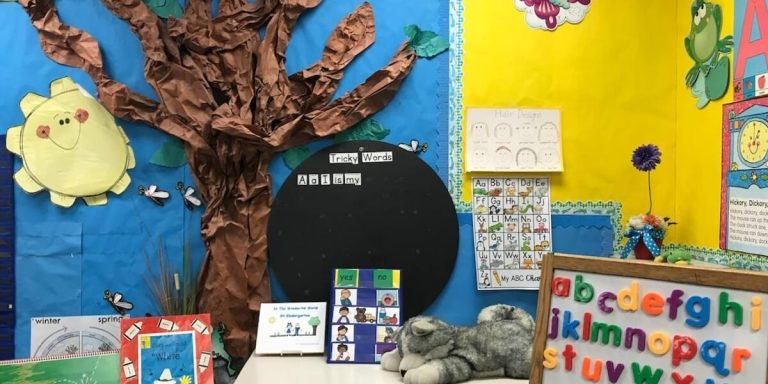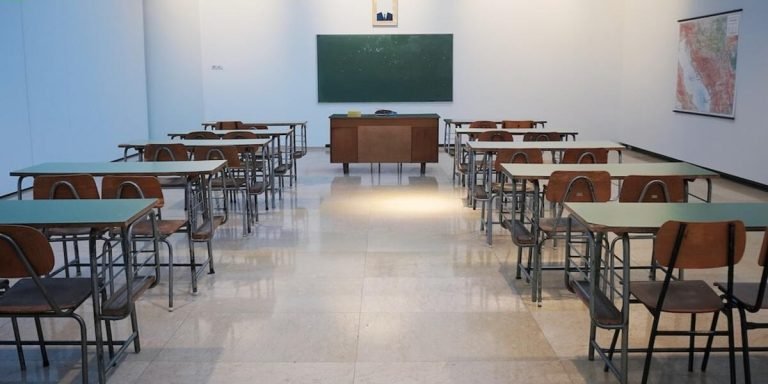Paragraph Comprehension: Enhancing Reading Skills in Early Education
Understanding the structure and purpose of paragraphs is fundamental in achieving good literacy skills. A skill known as “paragraph comprehension” not only helps children make sense of text, but it also forms the basis for effective reading, fostering analytical thinking at a tender age. Recognizing this importance can pave the way towards practical learning approaches that strengthen these foundations from an early stage.
In our journey through elementary school learning, we encounter varying degrees of challenges when processing information presented in different textual formats. This inevitable part manifests particularly during paragraph comprehension — a critical aspect where young students often misunderstand or overlook key points within context due to inadequate decoding strategies or lack thereof entirely.
Did you know?
Studies show that children as young as six can start understanding the concept of paragraphs, with proper guidance – a step that significantly boosts their comprehension skills in later years.
Enhancing Paragraph Comprehension Skills in Elementary Students
The rapid advancements in technology have revolutionized the education sector, especially elementary school learning. One of the crucial areas it has greatly benefited is facilitating paragraph comprehension skills among young learners. Through interactive applications and software, students can improve their understanding of written text, enhancing their overall academic performance.
Moreover, artificial intelligence-powered tools offer personalized learning paths underscoring individual strengths and weaknesses effectively addressing specific needs related to comprehending paragraphs. Such AI algorithms adjust content difficulty based on student’s progress thereby maintaining constant challenge stimulating interest towards reading ultimately honing paragraph comprehension essential in any field of study or work backdrop.
Strategies for Improving Reading Understanding
Improving the reading comprehension skills of elementary students is a key aspect in their learning process. As educators and parents, it’s crucial to provide strategies that help enhance paragraph comprehension within our young learners.
One such approach is utilizing technology integration in education – an innovative method immensely relevant today. With children being tech-savvy at an increasingly early age, leveraging this knowledge can greatly aid educational processes; enhancing not only general understanding but also paragraph comprehension specifically.
Firstly, introducing interactive e-books can revolutionize traditional reading practices for your child or student. These digital books often incorporate vibrant visuals and animations along with text which make the content more engaging. The ability to touch and interact with story elements helps bridge any gap between understanding words on a page and comprehending what they mean collectively as paragraphs.
Secondly, consider implementing Educational Applications designed specifically for improving literacy skills in children including word recognition & vocabulary building – both vital aspects of good paragraph comprehension.
Thirdly, using additional resources like video summaries or audio translations available online are excellent tools too! They engage auditory senses while reinforcing what was read through visual means – essentially leading to better retention hence improved overall paragraph comprehension!
Incorporating Interactive Activities to Boost Comprehension
Interactive Activities have proved beneficial in promoting engagement and active learning for elementary students. They transform conventional teaching practices by making lessons more fun and relatable.
Engaging literary video games are one popular option for interspersing traditional education with tech-savvy programming. These tools can help simplify complex concepts while emphasizing core ideas within text passages—boosting overall ‘paragraph comprehension’. Such integration encourages students to interact directly with texts at their own pace—an important attribute they need as part of their educational journey.
Another highly effective tool are Interactive eBooks which work wonders on elevating reading experiences beyond static pages through illustrations, clickable links or hidden flaps leading readers towards explanation segments—all contributing greatly to improved paragraph comprehension among young learners.
Lastly yet importantly we cannot overlook Gamified Quizzes where answering questions based on read paragraphs prove very helpful—it reinforces knowledge retention while assessing progress concurrently through scores achieved after quiz completion—helping educators detect areas requiring additional focus sans boring worksheets.
The Role of Vocabulary Development in Understanding Texts
The role of vocabulary development in understanding and interpreting texts is paramount, especially within the scope of elementary school learning. As children begin their academic journey, having a robust vocabulary equips them with necessary comprehension tools to dissect paragraphs effectively. The better equipped they are at recognizing words and comprehending their meanings, the more skillfully they can navigate through complex sentences or longer texts.
This process goes hand-in-hand with technology integration into education, which has become an inherent part of teaching strategies as we move forward into 2023. Technology provides access to diverse learning resources aiding students in expanding their vocabularies interactively and enthusiastically such as online dictionaries or interactive language games specifically designed for young learners.
As powerful instruments for enhancing paragraph comprehension skills among youngsters, these technological aids encourage self-paced practices fostering independent thought processes while simultaneously promoting active engagement with words on multiple levels. They not only read new words but hear how they sound; witness it used in context; hence gaining knowledge about its usage both pragmatically and semantically resulting in holistic literacy enrichment indispensable for profound text understanding.
Techniques for Expanding Young Learners’ Word Knowledge
In the realm of elementary school learning, one cannot undermine the role vocabulary development plays in enhancing paragraph comprehension. A robust range of words not only enriches a child’s conversational skills but also aids them significantly when reading and understanding texts.
Stimulate word knowledge growth among young learners with these effective techniques that integrate technology into education:
1. **Tech-Savvy Reading Apps:** Innovative educational apps like Epic! or Raz-Kids offer interactive reading sessions complete with illustrations to help youngsters understand new words.
This integration makes learning an active process rather than a passive one, where children can interact with unfamiliar terms immediately as they encounter them in their readings.
2. **Educational Games:** Gamifying education is another effective way for enhancing vocabulary among kids today. Online games such as Word Worm or Scrabble Go provide engaging platforms where students learn new terms while having fun simultaneously.
3. **Digital Flashcards**: Turning to digital flashcards through tools like Quizlet offers repetitive exposure to novel words making it easier for children to remember challenging terminologies.
4.Core Learning Systems: Platforms such as Achieve3000 adaptively increase text difficulty levels based on individual student performance promoting gradual progress towards higher-level vocabulary mastery .
Utilizing Context Clues to Aid Comprehension
Understanding the complexity of texts and developing a solid reading comprehension base is integral to elementary school learning. One effective method for enhancing paragraph comprehension in children involves the use of context clues within written material.
Context clues provide hints about an unknown word’s meaning within the text itself, contributing significantly to vocabulary development. When students understand how to utilize these cues effectively, it leads to improved understanding and retention of information found in educational texts and materials.
So how can we integrate this strategy into daily teaching practice?
1. Start by Training Your Child: Begin by introducing your child or learner group to simple sentences containing words they don’t know yet but are likely able comprehend based on surrounding terms or phrases – i.e., contextual indicators.
2. Use Diverse Reading Materials: To ensure a holistic approach, make sure you’re using varied types of reading materials that cater different levels of difficulty – books, articles online news stories etc all work well here!
Assessing and Monitoring Progress in Paragraph Comprehension
The importance of paragraph comprehension in elementary school learning cannot be overstated. As we continue to navigate our children through the exciting yet complex landscape of digital integration in education, mastering this key skill remains non-negotiable. It sets a foundation for enhanced cognitive ability and improved academic performance across various subjects – from English literature to science.
A fair assessment procedure is essential when it comes to monitoring progress in paragraph comprehension, offering an accurate reflection of students’ understanding level as well as their reading proficiency. With technology emerging at the forefront of today’s educational tools due its accessibility and adaptability nature, teachers now have multiple innovative ways at their disposal that facilitate student engagement with texts while tracking progress effectively.
Online platforms designed to reinforce language skills employ games and interactive quizzes that make evaluating paragraph comprehension less daunting for young learners. These tools usually offer immediate feedback which helps keep student motivation high while also providing educators valuable insight into each individual learner’s pace. Such tech-driven approaches do more than just monitor growth; they foster a love for learning by making it enjoyable and personalized – thereby complementing traditional classroom teaching methods brilliantly.
Tools and Methods for Measuring Student Progression
Assessing and monitoring a student’s progress in paragraph comprehension is a crucial aspect of elementary school learning. With the right tools and methods, educators can not only measure how well students understand text but also identify areas for improvement to aid their educational journey.
Technology has introduced new dimensions to education, offering innovative ways to measure progress in paragraph comprehension accurately and efficiently. Here are some notable tech-enabled tools and methods:
1) Online Reading Comprehension Tests: These tests provide instant feedback on each question which helps monitor real-time understanding while reading paragraphs or stories online.
2) Digital Progress Tracking Apps: Applications like ClassDojo or Seesaw allow teachers to track student progress seamlessly over time by storing marks, grades, comments etc., facilitating an ongoing assessment process rather than one-off evaluations after exams.
3) E-books with Embedded Questions: Certain e-book platforms weave multiple-choice questions into the text itself at regular intervals allowing constant touchpoints for measuring comprehension levels as chapters unfold in chronological order before children’s eyes.
Tailoring Feedback to Encourage Growth in Reading Skills
In the modern educational landscape, feedback is not merely a one-size-fits-all proposition. It’s crucial to tailor it to encourage growth in reading skills, particularly paragraph comprehension. With technology integration in education becoming ever more prevalent, this task has become simpler and yet also complex.
Paragraph comprehension plays a pivotal role in elementary school learning because it forms the foundation of effective communication and information processing. By developing strong paragraph comprehension skills early on, students are better equipped for advanced studies where critical thinking takes center stage.
Strategically designed games or applications can be an excellent tool for teaching young learners about paragraph comprehension. Engaging visuals combined with varying levels of difficulty catered to each student’s proficiency level allows them to progress at their own pace while making learning fun.
Monitoring Progress should go hand-in-hand with Assessment tools as well:
Adaptive quizzes programmed based on individual learner abilities provide metrics from which educators can measure improvement over time.
Feedback mechanism tailored specifically aimed towards encouraging growth includes:
Conclusion
In conclusion, nurturing paragraph comprehension skills early in children’s education journey not only boosts their reading proficiency but also equips them with the tools necessary for lifelong learning. This seemingly little cog is a fundamental component of our educational structure that invariably impacts cognitive growth and academic success. It’s all about understanding context, deriving meaning and connecting the dots within texts – tasks which can be mastered through consistent practice and guidance.
Before you go back to your bustling day-to-day activities committed to shaping young minds or raising brilliant kids at home, take another moment to explore further on our website where we delve into various facets of childhood education. Find practical advice, research-based strategies along with parent-educator support resources tailored to help make this enchanting yet challenging journey easier for both you and your child!







